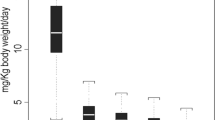Abstract.
The 1995 Annual Report of the North American Pediatric Renal Transplant Cooperative Study summarizes data voluntarily collected from 123 centers on 5,197 children and adolescents grouped into three cohorts: (1) patients who received renal transplants on or after 1 January 1987 (n = 3,066), (2) patients who were maintained on peritoneal dialysis (PD) or hemodialysis (HD) on or after 1 January 1992 (n = 1,488), and (3) patients treated for chronic renal insufficiency (CRI) on or after 1 January 1994 (n = 643). The transplant and dialysis information update previous registry data whereas the CRI information reflects 1st-year registry data. Three-year graft survival rates were 83% and 66% for living donor grafts and cadaver donor (CD) grafts, respectively. Triple drug maintenance therapy with prednisone, cyclosporine, and azathioprine was used by >70% of all transplant recipients through 5 years of follow-up. The 2-year CD survival has steadily improved from 65% in 1987 to 82% in 1992. Fifty malignancies have been reported, the majority of which are lymphoproliferative disorders. The 2-year patient survival posttransplantation is 95%. Mortality rates for the youngest patients have drastically improved over the past 2 years. Approximately two-thirds of patients in the dialysis cohort are maintained on PD; automated PD remains the preferred modality. Overall, the peritonitis rate is one infection every 13.3 patient months, the frequency of infection being greatest in the youngest patients. Whereas the primary reason for dialysis modality termination is transplantation, approximately 40% of the entire dialysis cohort (PD and HD) were not considered active transplant candidates. Baseline CRI data revealed the most common primary diagnoses to be obstructive uropathy (24%) and aplastic/hypoplastic/dysplastic kidneys (19%). The standardized height deficit in the CRI cohort was greatest in the youngest patients and those with the most impaired renal function.
Similar content being viewed by others
Author information
Authors and Affiliations
Rights and permissions
About this article
Cite this article
Warady, B., Hébert, D., Sullivan, E. et al. Renal transplantation, chronic dialysis, and chronic renal insufficiency in children and adolescents. The 1995 Annual Report of the North American Pediatric Renal Transplant Cooperative Study. Pediatr Nephrol 11, 49–64 (1997). https://doi.org/10.1007/s004670050232
Issue Date:
DOI: https://doi.org/10.1007/s004670050232




